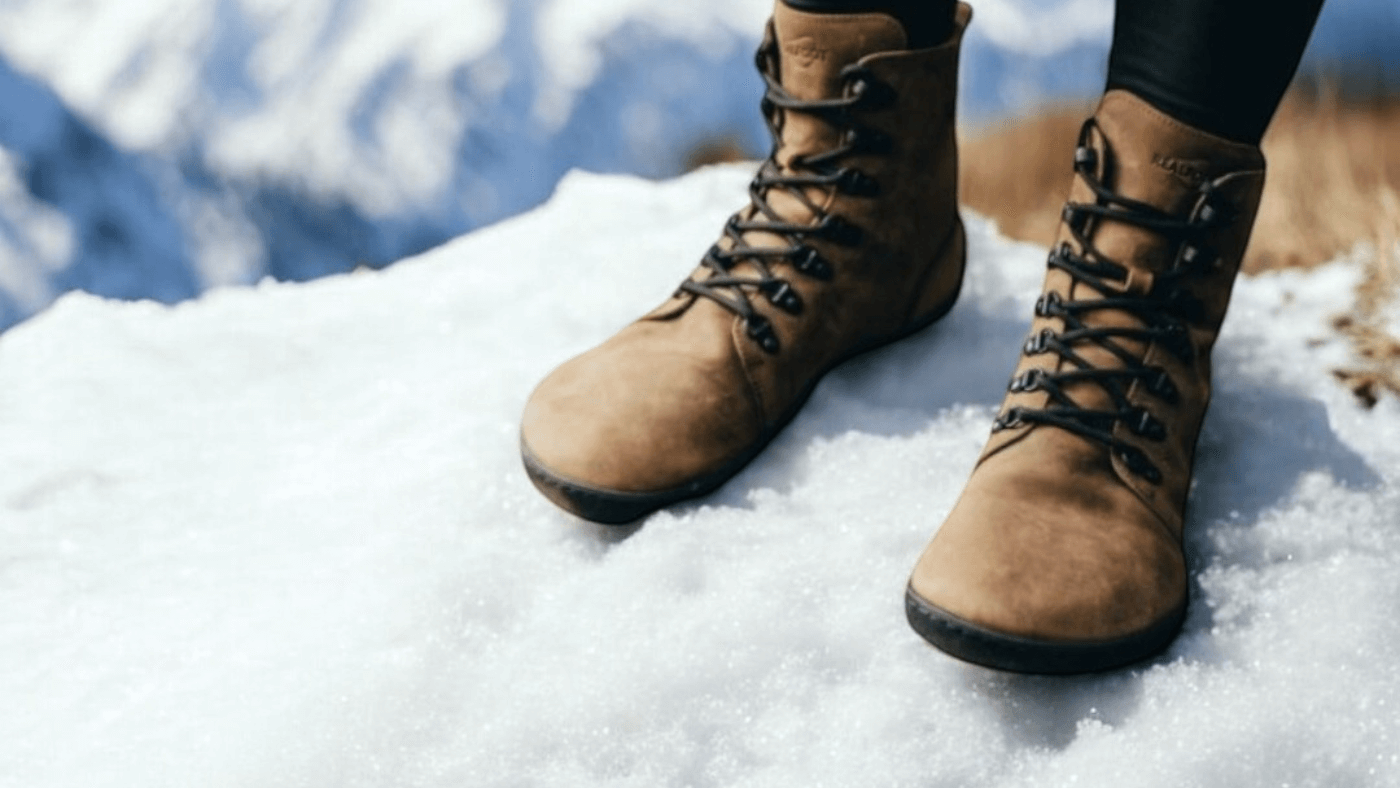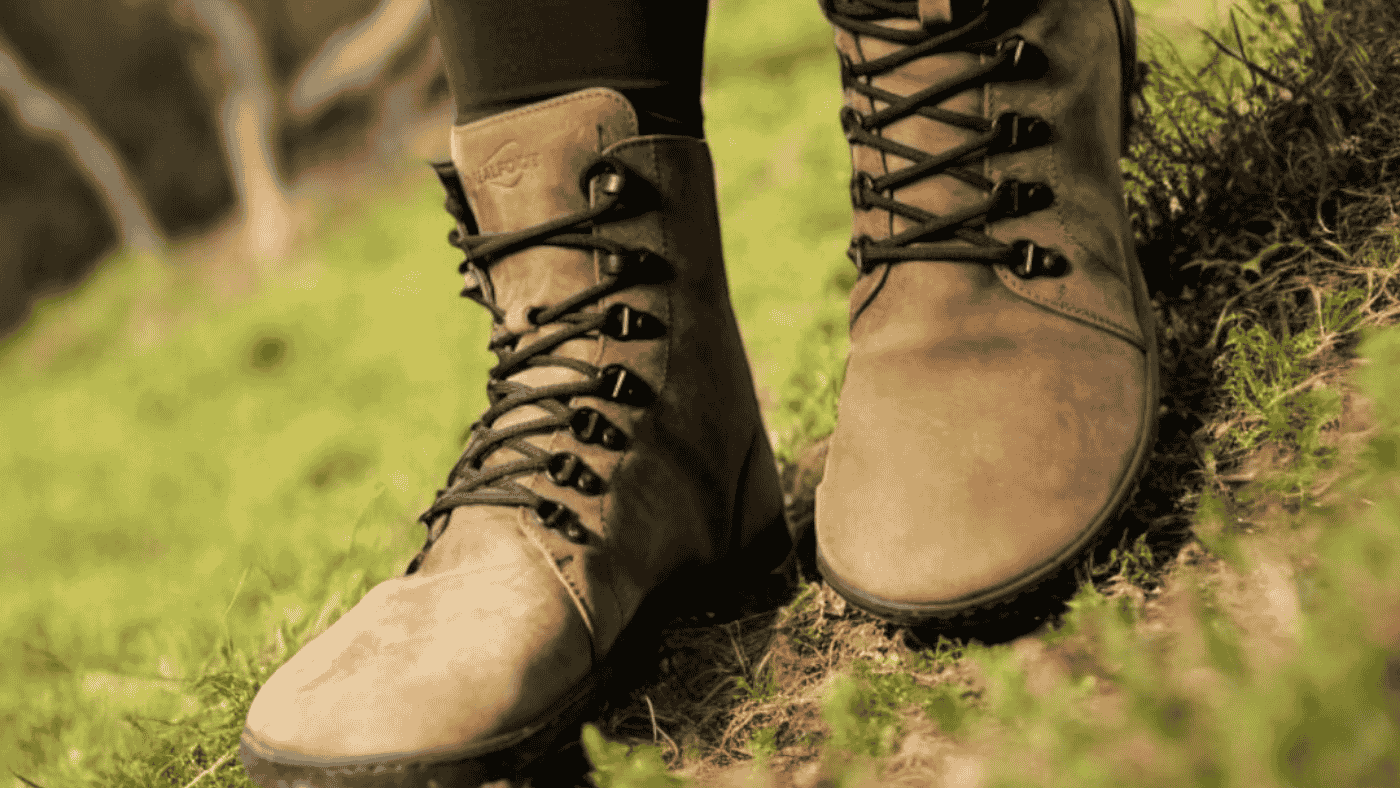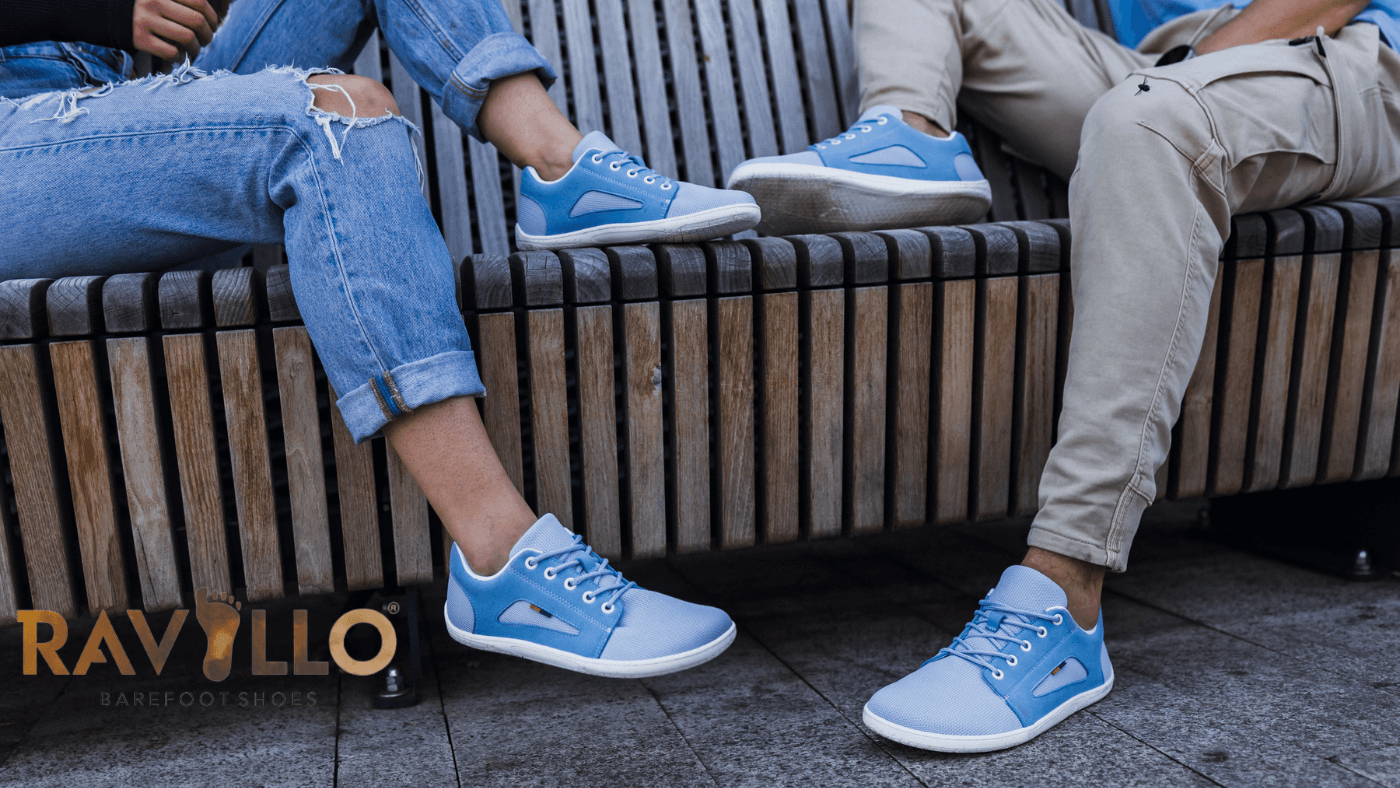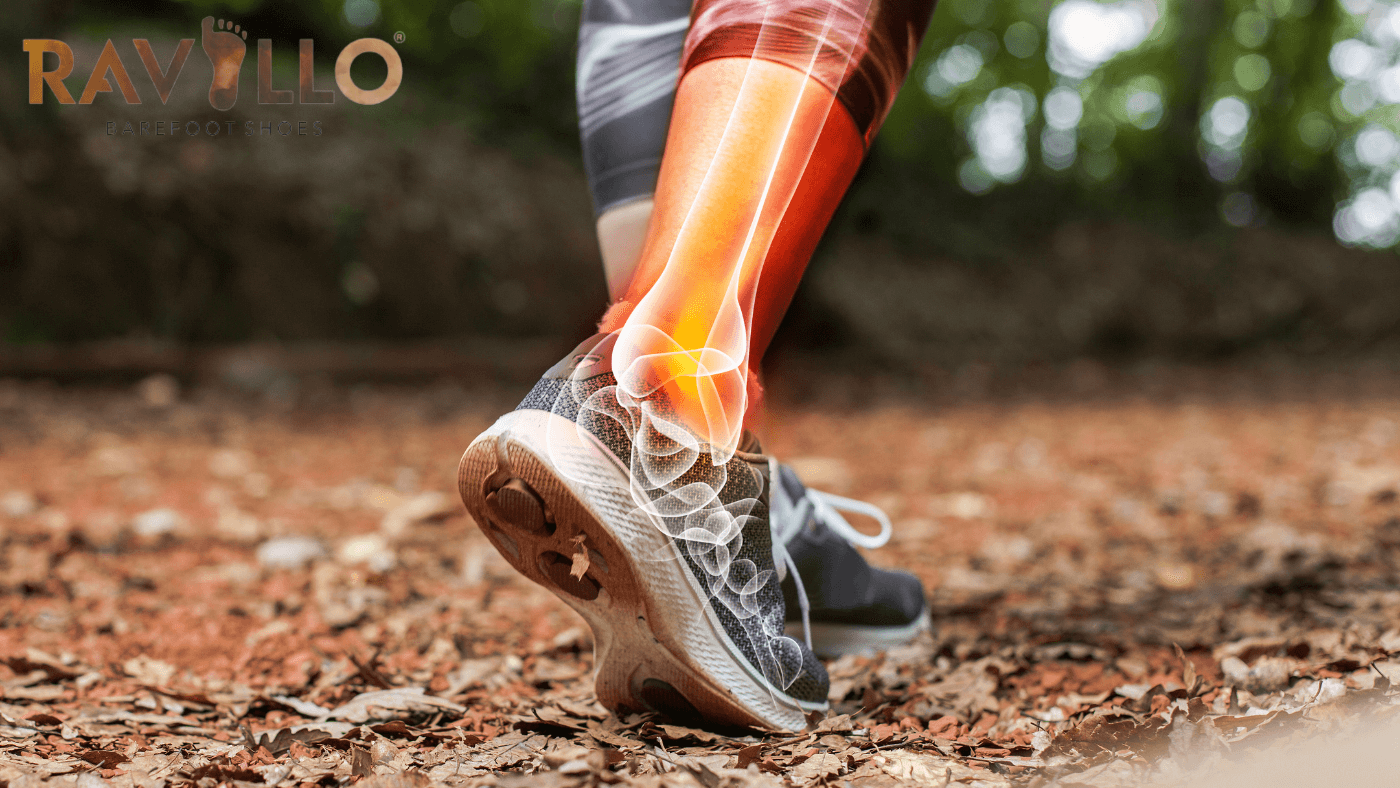Barefoot Shoes | Discover the Best Barefoot Shoes for Ultimate Comfort
Introduction to Barefoot Winter Boots
Barefoot winter boots are changing how we think about footwear in colder months. These boots focus on comfort and foot health, featuring a zero-drop design that supports a natural foot position. This design helps improve posture and foot strength. Unlike traditional winter boots that can restrict movement, barefoot snow boots allow your feet to move freely, enhancing muscle engagement and overall foot health. This flexibility is especially important in winter, where maintaining foot function is crucial.
A key feature of barefoot winter boots is their size adaptability, allowing for a comfortable fit. extra wide toe box. This design allows for proper toe splay, which is vital for balance and stability. A Review on Realfoot highlights the benefits of barefoot sneakers for winter wear. highlights that having enough space for your toes to spread can greatly enhance comfort and lower the risk of injuries, especially on slippery surfaces. The flexibility of these boots supports natural foot movement and helps strengthen foot muscles, leading to healthier feet over time.
Many barefoot snow boots also come with insulation and waterproof materials. This keeps your feet warm and dry while still enjoying the benefits of barefoot design. According to a study on the warmest barefoot winter boots, these boots are thickly padded for warmth but remain lightweight, making them suitable for long wear in cold weather.
The minimalist design of barefoot winter boots promotes a more natural walking pattern. Traditional winter boots can cause foot fatigue and discomfort, but barefoot boots encourage a natural gait, helping to alleviate these issues. As noted in the benefits of barefoot minimalist shoes, choosing barefoot winter boots can significantly contribute to healthier feet during winter.
In summary, barefoot snow boots are an excellent choice for anyone wanting to maintain foot health while navigating winter conditions. With their comfort, flexibility, and supportive design, they offer a unique solution for enjoying outdoor activities without compromising foot health. Investing in a pair of these boots can lead to stronger arches and better overall foot function, making them a smart choice for winter footwear.
Traditional Winter Boots vs. Barefoot Winter Boots
Choosing between traditional winter boots and barefoot winter boots can greatly affect your comfort and foot health. Traditional winter boots often focus on insulation and waterproofing but can restrict natural foot movement. This restriction can lead to discomfort and foot pain over time. In contrast, barefoot snow boots are designed to promote a natural foot position and movement, enhancing overall foot health during colder months.
Barefoot snow boots typically feature a mesh lining for breathability and comfort. zero-drop design, allowing your feet to maintain a natural posture. This design encourages better alignment and can help prevent common foot problems like plantar fasciitis and bunions. A study on barefoot winter boots shows that these boots improve foot strength and flexibility, which is essential for healthy feet in winter. The flexibility of barefoot boots allows your feet to move naturally, enhancing muscle engagement and reducing injury risk.
Many barefoot snow boots also have insulation and waterproof materials, ensuring your feet stay warm and dry without sacrificing comfort. Their lightweight and breathable design makes them suitable for extended wear, allowing you to enjoy outdoor activities without the heaviness of traditional boots. The Realfoot Review Notes that the extra wide toe box in barefoot boots allows for proper toe splay, enhancing balance and stability, especially on slippery surfaces, similar to the design of running shoes.
In contrast, traditional winter boots often have thick soles that disconnect you from the ground, making it harder to maintain balance. This can lead to foot fatigue and discomfort, especially in harsh winter conditions. The minimalist design of barefoot winter boots, as highlighted in the benefits of barefoot shoes, allows for a more natural gait, significantly reducing foot fatigue.
Ultimately, choosing barefoot snow boots can lead to healthier feet and a more enjoyable winter experience. By allowing natural foot movement and providing essential insulation and waterproofing, these boots are an excellent choice for anyone wanting to maintain foot health in winter, similar to the benefits of wearing knit shoes. Investing in barefoot winter boots enhances comfort and supports overall foot health during colder months, comparable to the comfort provided by sandal designs.
Improved Foot Strength and Flexibility
Improved foot strength and flexibility are key benefits of wearing barefoot snow boots, especially in winter. These boots feature a zero-drop structure that promotes a natural foot position, improving posture and foot strength. Unlike traditional winter boots that restrict movement, barefoot snow boots encourage a natural gait, reducing foot fatigue and discomfort in cold weather. This is crucial for those spending long periods outdoors, as maintaining foot health is vital for overall well-being.
The flexibility of barefoot snow boots allows your foot to move naturally, effectively engaging the muscles. This engagement leads to stronger arches and better overall foot health. A study on barefoot winter boots shows that these boots mimic the natural shape and movement of the foot, vital for maintaining foot strength and comfort in winter. The extra wide toe box in many barefoot designs enables proper toe splay, enhancing balance and stability, especially on slippery surfaces.
Moreover, the minimalist design of barefoot snow boots often includes breathable materials and insulation, ensuring your feet stay warm and dry without sacrificing flexibility. This combination of comfort and functionality makes them an excellent choice for anyone wanting to maintain healthy feet while enjoying outdoor activities in winter, especially when hiking. The Realfoot Review highlights that wearing barefoot boots can reduce injury risk by promoting better balance and stability in challenging winter environments.
In summary, choosing barefoot snow boots can lead to healthier feet by encouraging proper foot function and reducing foot-related issues. The benefits of improved foot strength and flexibility are not just about comfort; they are crucial for overall foot health. For those concerned about foot pain or discomfort, investing in barefoot winter boots is a smart choice that can enhance your outdoor experience in winter. For more insights on the advantages of barefoot footwear, check out the latest review on xero shoes. benefits of barefoot minimalist shoes.
Enhanced Comfort During Cold Months
As cold months approach, finding the right footwear is essential for comfort and foot health. Barefoot winter boots Barefoot winter boots are an excellent choice for those wanting warmth and the benefits of natural foot movement, akin to wearing canvas chelsea boots in winter. Designed with a zero-drop structure, these boots allow for a natural foot position, promoting better posture and foot strength. This design is especially beneficial in winter, as it encourages a natural gait, reducing foot fatigue and discomfort often linked to traditional winter boots.
A standout feature of barefoot winter boots is their extra wide toe box. This design allows for proper toe splay, crucial for balance and stability, especially on slippery surfaces. A study on barefoot winter boots shows that this feature enhances muscle engagement in the feet, leading to stronger arches and improved overall foot health. The flexibility of these boots enables natural foot movement, significantly reducing injury risk during winter activities, much like wearing barefoot sneakers.
In addition to their structural benefits, many barefoot snow boots come with insulation and waterproof materials. This keeps your feet warm and dry without compromising flexibility and comfort. The minimalist design often includes breathable materials, making them suitable for extended wear in cold conditions. The Realfoot Review highlights that the lightweight nature of vivobarefoot boots contributes to overall comfort, allowing for prolonged use without discomfort.
Moreover, the natural foot movement encouraged by barefoot snow boots can lead to improved foot strength and flexibility. This is particularly important in winter when traditional boots can restrict movement and cause foot pain. By choosing barefoot winter boots, you invest in your foot health, promoting proper foot function and reducing foot-related issues. The benefits of barefoot shoes extend beyond comfort; they can enhance your overall well-being in winter.
In conclusion, barefoot snow boots are not just practical for winter; they are a smart investment in your foot health. With their warmth, flexibility, and support, these boots allow you to enjoy outdoor activities while keeping your feet healthy and comfortable. If you want to maintain foot health this winter, consider switching to barefoot snow boots.
Promoting Overall Foot Health
Promoting overall foot health is crucial, especially in winter when traditional footwear can restrict natural movement. Barefoot winter boots are designed to support foot health while providing warmth and comfort in winter conditions. These boots typically feature a zero-drop design, promoting a natural foot position that encourages better posture and foot strength. This design allows your foot to move freely, enhancing muscle engagement and improving overall foot health.
A standout feature of barefoot snow boots is their extra wide toe box. This design allows for proper toe splay, essential for maintaining balance and stability. A Review on Realfoot emphasizes the comfort and practicality of barefoot sneakers for colder climates. notes that extra space for toes to spread can significantly enhance comfort and lower injury risk, especially in slippery winter conditions. The flexibility of these boots also helps strengthen foot muscles, vital for reducing common foot problems.
Many barefoot winter boots come with insulation and waterproof materials. This keeps your feet warm and dry without sacrificing barefoot design benefits. A study on the warmest barefoot winter boots shows that these boots are thick and padded for warmth while providing excellent traction, making them suitable for various winter activities.
The minimalist design of barefoot snow boots allows for a more natural range of motion, essential for maintaining foot health in harsh winter conditions. Unlike traditional winter boots that restrict movement, barefoot boots encourage a natural gait, helping to reduce foot fatigue and discomfort. Findings in the Journal of Positive Psychology highlight how barefoot footwear can lead to stronger foot muscles and better overall foot health.
In conclusion, choosing barefoot winter boots can significantly contribute to healthier feet in winter. They provide necessary warmth and protection while promoting natural foot movement, essential for maintaining foot strength and flexibility. For anyone concerned about foot health, investing in quality barefoot winter boots is a smart choice that enhances comfort and support during outdoor activities in cold weather.
How to Choose the Right Barefoot Winter Boots
Choosing the right barefoot winter boots is essential for maintaining foot health and comfort in colder months. These boots are designed to promote natural foot movement while providing insulation and waterproofing to keep your feet warm and dry. Here are key factors to consider when selecting the perfect pair.
1. Fit and Comfort
The fit of your barefoot winter boots is crucial. Look for boots with an extra wide toe box to allow for proper toe splay. This design enhances balance and stability, especially in slippery winter conditions. A snug fit around the heel with ample room in the toe area will help you feel secure while allowing your toes to move freely in minimalist footwear. The Realfoot Review notes that boots accommodating natural toe movement can significantly improve comfort and reduce injury risk.
2. Zero-Drop Design
Opt for boots with a zero-drop design. This feature promotes a natural foot position, helping to prevent common foot ailments and improve overall posture. The flexibility of minimalist footwear allows for a more natural range of motion, essential for maintaining foot health in harsh winter conditions. The article on the warmest barefoot winter boots notes that this design encourages better posture and foot strength.
3. Insulation and Waterproofing
When selecting barefoot winter boots, ensure they are insulated, waterproof, and designed like xero shoes for optimal comfort. Many options provide these features without sacrificing barefoot design benefits, making them a great alternative to traditional leather boots. Insulation keeps your feet warm, while waterproof materials ensure dryness, allowing you to enjoy outdoor activities without discomfort. The combination of insulation and waterproofing is essential for maintaining healthy feet in winter, as highlighted in the benefits of barefoot minimalist shoes.
4. Traction and Flexibility
Good traction is vital for navigating icy or snowy surfaces. Look for boots with a flexible sole that allows for better ground feel and encourages foot muscle use. This flexibility enhances comfort and helps strengthen foot muscles, leading to improved overall foot health.
Conclusion
In summary, when choosing the right barefoot snow boots, prioritize fit, zero-drop design, insulation, waterproofing, and traction. By considering these factors, you can ensure your feet remain healthy and comfortable throughout winter. Investing in quality barefoot winter boots is a smart choice for anyone concerned about foot health while enjoying outdoor activities in cold weather, especially on trails.
Tips for Transitioning to Barefoot Winter Boots
Transitioning to barefoot winter boots can greatly improve your foot health in colder months. These boots are designed to promote natural foot movement while providing warmth and protection needed in winter, making them ideal for a winter hike. Here are tips to help you make the switch effectively.
1. Choose the Right Fit
When selecting barefoot snow boots, ensure they have an extra wide toe box. This feature allows for proper toe splay, essential for maintaining balance and stability on slippery surfaces. A snug fit around the heel with ample room in the toe area will help you feel secure while allowing your toes to move freely. The Realfoot Review notes that the right fit can significantly enhance comfort and foot health.
2. Gradual Transition
If you are used to traditional winter boots, it’s important to transition gradually to barefoot winter boots. Start by wearing them for short periods, gradually increasing the duration as your feet adapt. This approach helps your foot muscles strengthen and adjust to the zero-drop design, promoting a natural foot position. The flexibility of these boots allows for a more natural range of motion, reducing injury risk as you adapt to the new footwear.
3. Incorporate Insoles
Consider using high-quality insoles, such as sheepskin or other supportive materials, to enhance comfort and warmth. Many barefoot winter boots come with minimal insoles that may not provide enough cushioning for colder weather. The All Time Warmest Barefoot Winter Boots article highlights that a good insole can make a significant difference in comfort during extended wear.
4. Focus on Foot Strengthening Exercises
To maximize the benefits of barefoot snow boots, incorporate foot strengthening exercises into your routine. Activities like toe curls, arch lifts, and balance exercises can enhance foot strength and flexibility. This is crucial, as barefoot boots encourage better muscle engagement, leading to stronger arches and improved overall foot health, as discussed in the Benefits of Barefoot Minimalist Shoes.
5. Stay Mindful of Weather Conditions
While barefoot winter boots are designed to be insulated and waterproof, always be mindful of the weather conditions when choosing your trail gear. Ensure that the minimalist footwear you choose is suitable for the specific winter conditions you will encounter. Look for features like good traction and waterproof materials to keep your feet warm and dry without sacrificing barefoot design benefits.
Conclusion
Transitioning to barefoot winter boots can greatly improve your foot health while keeping you comfortable in cold weather. By choosing the right fit, transitioning gradually, using supportive insoles, focusing on foot exercises, and being mindful of the weather, you can enjoy the benefits of barefoot footwear all winter long. For more insights on maintaining foot health, check out our related posts on foot care and winter footwear.
Embrace the change and give your feet the freedom they deserve this winter
Conclusion: Embracing Healthy Feet in Winter
As winter approaches, maintaining healthy feet becomes crucial, especially in cold and slippery conditions. Embracing barefoot winter boots can greatly enhance your foot health during these months. Designed with a zero-drop structure, these boots promote a natural foot position, essential for better posture and foot strength. Unlike traditional winter footwear that restricts movement, barefoot boots allow for a more natural range of motion, crucial for maintaining foot health in harsh winter conditions.
A standout feature of barefoot winter boots is their flexibility. This design encourages the foot to move naturally, enhancing muscle engagement and improving overall foot strength. A study on barefoot winter boots shows that these boots are insulated and waterproof while providing excellent traction, ensuring your feet stay warm and dry without sacrificing comfort. The combination of insulation and a flexible sole allows for better ground feel, vital for maintaining balance on slippery surfaces.
Many barefoot snow boots also feature an extra wide toe box, allowing for proper toe splay. This feature is essential for enhancing balance and stability, particularly in winter conditions where footing can be precarious. The Realfoot Review highlights that extra space for toe splay not only contributes to comfort but also helps reduce injury risk by promoting better foot function.
Investing in minimalist barefoot winter boots can lead to healthier feet, as they encourage proper foot function and reduce the likelihood of foot-related issues. The minimalist design of these boots helps reduce foot ailments by promoting proper alignment and reducing pressure on the feet, as noted in the benefits of barefoot shoes.
In conclusion, as you prepare for winter, consider switching to barefoot snow boots. They provide the warmth and protection needed during cold weather while supporting your foot health in ways traditional winter boots cannot. By choosing barefoot footwear, you take a proactive step towards maintaining healthy feet, ensuring you can enjoy outdoor activities without discomfort or pain. For more insights on keeping your feet healthy this winter, check out our related posts on foot health and winter footwear.











